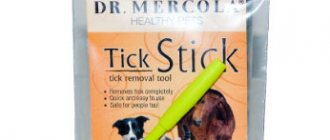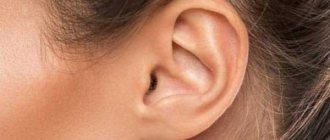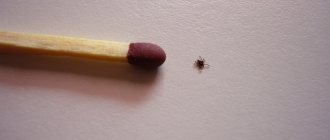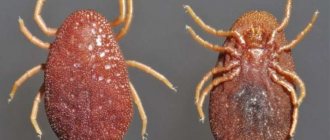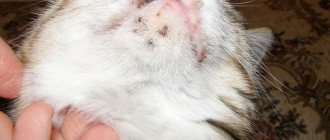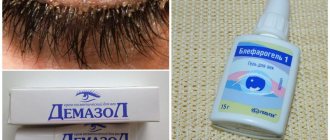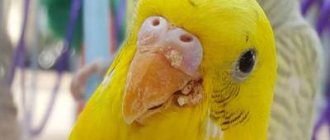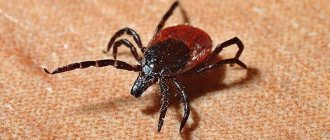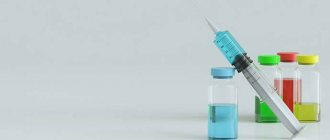Patients who become infected with Demodex mites may experience unpleasant symptoms. Sometimes this disease leads to serious complications.
When a mite penetrates the eye area, it leads to increased tearing, eyelash loss, and inflammation. This parasite multiplies in the sebaceous and meibomian glands, as well as in the hair follicles of the patient. Often a tick infection is asymptomatic, that is, it does not cause any discomfort to the host. However, the activity of the tick can increase when the functioning of human internal organs is disrupted, including the immune, nervous and endocrine systems.
The size of the Demodex mite varies from 0.16 to 0.48 mm. About 25 individuals can live in one hair follicle. In a quarter of cases of tick detection on the skin of the face, damage to the sebaceous glands and meimobian ducts occurs. A number of ophthalmological problems are also caused by infection with this parasite. Thus, it is one of the leading causes of blepharitis, chalazion, blepharoconjunctivitis, episcleritis, and keratitis.
What is an eye mite
Photo 1. Demodex eye mite.
Eye mite
– red mite of the genus Demodex, the smallest parasitic arthropod. The photo shows an adult specimen, its length is 0.3-0.4 mm, its body is elongated, translucent, covered with scales. Fertilization is internal. The life cycle is two to three weeks.
According to recent studies, these mites are constantly present in the skin of all mammals without manifesting themselves in any way. With certain disturbances in the functioning of the immune system, they are activated, causing a disease - demodicosis. In humans, they live mainly on the face, localized in the sebaceous and meibomian glands, and hair follicles. They feed on the secretions of the sebaceous glands and epidermal cells. At night they come to the surface to mate. Able to move on the skin.
Harm of demodex
The disease causes redness of the patient's skin. Hair may fall off the head. Skin irritation and damage to some areas are observed. Ticks need food; they are usually saturated with substances from various glands. Demodex sits deep under the skin and absorbs all substances from the roots and the hair itself. Demodex poisons the body with negative bacteria.
In the evening, the mite leaves the hairline, and when it returns again, harmful bacteria come with it. The condition of the skin worsens, acne and pimples appear, the skin becomes oily. You may feel itchy. The most common symptom is blepharitis. This is when the edges of the eyelids become red, they constantly itch, and in the evening everything becomes even worse. In some patients, the disease causes loss of eyelashes. You can note such a symptom as constant tearfulness and the feeling that there is something in the eye, chronic conjunctivitis develops. Various types of itching of the ears and itching of the scalp appear. Eyes may itch and eyelashes may fall out, red spots may appear on the face, and the skin will peel and become oily.
Many people do not even realize that they are carriers of demodex. A tick can develop and feed for years, and a person does not suspect anything about it. It is usually located at the main surface layer of the skin. So the immune system doesn't react to it. When corticosteroid ointments are used, the female Dermodex lays her eggs deep under the skin.
And then the body reacts. The immune system kicks in. Irritation appears and the mite begins to develop.
The chronic form of the disease is caused by weak immunity. There have been cases where the mite was provoked by the use of cosmetics that contained dietary supplements and hormones. The development of demodex is also influenced by prolonged visits to baths and saunas.
A sure indicator that you have this mite is the feeling that your head and face are itching. The disease affects the cheeks, forehead, and lower half of the nose. Ticks appear in the late afternoon. To identify demodex, your dermatologist will advise you to take a test. And on the same day you will find out if you have a tick.l
Reasons for the development of demodicosis
Normally, the number of mites is regulated by the immune mechanism of the human carrier. Factors that reduce immunity and provoke the development of demodicosis can be external or internal.
External
- long-term use of antibiotics, hormonal drugs;
- abuse of cosmetic procedures - peeling, facial cleansing;
- prolonged infrared or ultraviolet irradiation;
- eye surgeries.
Domestic
- bacterial and viral infections;
- allergy;
- chronic gastrointestinal diseases;
- stress;
- keratoconjunctivitis;
- pregnancy;
- hormonal disorders.
Prevention
To avoid the spread and reproduction of eyelash mites, it is recommended to adhere to the following rules:
- daily hygiene of hands, face, eyes;
- proper healthy nutrition containing nutrients, vitamins, minerals, microelements;
- treatment of clothing with a hot iron, especially for persons with a predisposition to the development of eyelash mites;
- timely treatment of systemic diseases;
- the use of drugs that stimulate the immune system for people with reduced function.
Preventive measures are recommended for persons with immunodeficiency or normal functionality. The above rules will protect the patient not only from tick development, but also from bacterial or viral infection. It is especially important to maintain immune function in the autumn-winter period, when the supply of nutrients and vitamins to the body is reduced.
Excessive production of eyelash mites is a fairly rare phenomenon that develops during a decrease in immunity. If purulent contents form in the eye area, it is recommended to immediately consult a doctor. If treatment is carried out on time, this will save the patient from complications.
Symptoms
Photo 2. Eye mites - symptoms of blepharitis.
In the initial stage of demodectic blepharitis, clinical manifestations are practically absent. Subsequently, with the increase in the reproduction of ticks, their waste products cause the appearance of the following symptoms:
- itching and burning of the eyes;
- redness, swelling, inflammation of the edges of the eyelids;
- sticky, thick discharge that accumulates in the corners of the eyes;
- sticking of eyelashes, appearance of scales and crusts on them;
- eyelash loss;
- dry eye syndrome.
Useful video
From this video you will learn about demodex on eyelashes:
Eyelash mite is a rather dangerous parasite that brings a lot of inconvenience of both an aesthetic, psychological and physical nature.
It is not easy to fight, but it is possible - you just need to be patient, because the duration of the course of treatment can reach 2 years.
To avoid Demodex infection, as a preventative measure, you should strictly adhere to personal hygiene rules and closely monitor your health.
Pathogenesis
Anatomically, blepharitis is divided into anterior and posterior. Invasion of the eyelash follicles is referred to as anterior blepharitis. In case of damage to the meibomian glands - about the posterior one.
Factors determining the negative impact:
- Mechanical damage.
Eating epithelial cells by mites disrupts the direction of eyelash growth, increases their loss, and contributes to the development of trichiasis. The internal cavity of the hair follicles increases, hyperkeratosis and mild perifolliculitis occur. Mechanical blockage of the meibomian gland ducts by parasites causes their hypersecretion and inflammation - chalazion.
- Secondary infection.
Tick-borne blepharitis is often complicated by a secondary infection, staphylococcal or streptococcal, which can lead to the development of purulent conjunctivitis and ulcerative blepharitis.
- Allergic reaction.
Mite waste products and dead individuals have a toxic-allergic effect on the membranes of the eye, and eyelid dermatitis develops.
Medications
Today, the following drugs are used to treat demodicosis on the face:
- Blepharogel;
- Metronidazole eye gel (1% or 2%);
- Demalan;
- Zinc-ichthyol ointment.
The drug blepharogel has gained the most popularity.
The fact is that it is made on the basis of sulfur - a product that perfectly fights mites and cleanses the ducts of the sebaceous glands from the waste products of this parasite. In addition, the drug contains hyaluronic acid, which accelerates the healing of damaged tissue and enhances local immune defense.
In the complex treatment of demodicosis, antihistamines (antiallergic) drugs can be used: lecrolin, diazolin and others.
To prevent secondary infection of the eyelids, broad-spectrum antibacterial drugs can be prescribed: tetracycline, tobramycin, okomistin, albucid.
How to cure demodicosis on a person’s face and eyelids using ointments and drops can be found in detail below.
Ointments
To cure demodicosis, doctors prescribe many medications, the most effective include ointments.
Sulfur ointment for demodicosis is a drug that disinfects, destroys parasites, and accelerates healing. An effective and cheap product is very popular. Minus – unpleasant smell, contamination of things. Apply the ointment to the skin, avoiding hairy areas. Therapeutic course – from 7 to 12 days.
Permethrin ointment for demodicosis is an insecticidal and acaricidal agent with local action. The active components of the drug penetrate the tick's body, immobilize and destroy it.
The facial skin is treated 2-3 times a day, avoiding hair. The duration of the therapeutic course is 2 weeks. Do not use on patients under 3 years of age.
Yam ointment for demodicosis of the face and eyelids for humans is a dermatological preparation, the components of which are effective against parasites and fungi. Frequency of use – 2 times per day, course duration – 2 weeks. Your doctor will advise you on the rules of application.
Ichthyol ointment destroys bacteria, disinfects, and eliminates pain. The affected skin is treated three times a day.
There are drugs for the treatment of demodicosis in humans on the eyelids and eyes: Blefarogel, Demalan, Zinc-ichthyl ointment, etc. These drugs are created specifically for the delicate skin of the eyelids, they do not irritate the mucous membrane of the eyes, and do not contain a large amount of toxins that are absorbed into the blood.
Drops
Another effective remedy for combating Demodex mites is eye drops. The habitat of parasites is the edges of the eyelids, so only the skin around the eyelashes is treated with drops.
Apply a few drops of anti-demodectic mange to your fingertips and massage your eyelids. The drug is instilled into the conjunctival sac only if the patient has itching, dryness and inflammation.
Acaricidal eye drops have proven themselves to be excellent: Carbochol, Physostegmin, Phosphacol. These are exactly the products that are used to treat the edges of the eyelids, and not for instillation.
Demodicosis complicated by secondary infection must be treated with antibacterial drops. The most effective drugs: Levomycytin drops, Levoflaxacin, Ciprofloxicin, Tobrex, Dex-Gentamicin, etc.
To relieve itching and other symptoms of allergies on the eyelids, use antihistamines: Acular, Okumetil, Dexamethasone.
Eyelid massage
Eyelid massage is a very important component of treatment, as it helps cleanse the glands of pus and dead skin cells. It is recommended to massage for 5-10 minutes before each application of the drug.
Demodicosis of the eyelids and cosmetics
During the illness, you must stop using all cosmetics.
This is important for the following reasons:
- Microscopic particles from mascara and other products can clog the gland ducts and further aggravate the disease;
- Any cosmetics (even the most expensive and high-quality ones) can cause increased allergic reactions;
- Cosmetics create favorable conditions for the growth and reproduction of demodex.
In order to prevent relapse, you need to throw away all the cosmetics that you used before the onset of the disease. The fact is that mites can persist for a long time both on the cosmetics themselves and on applicators and brushes for applying makeup.
Laboratory diagnostics
If you have a history of persistent styes, eyelash loss, chronic acne and rosacea, then demodicosis can be suspected with a high degree of probability. However, laboratory testing is necessary for an accurate diagnosis.
Preparing for diagnosis
- Two days before the procedure, it is prohibited to apply decorative and medicinal cosmetics to the face.
- Do not apply eye drops the day before.
- Do not wash or wet your face for 24 hours.
Methodology
The procedure is carried out in the evening, when mites crawl to the surface of the skin and are easier to detect. Eight cilia are taken from each eye - four from the upper eyelid and four from the lower eyelid, placed on a glass slide in an alkali solution and examined under a microscope at low magnification.
Interpretation of the result
- The absence of mites, eggs, larvae - the result is negative.
- The presence of empty egg shells is a positive result, but requires repeating the analysis.
- The presence of at least one tick – demodicosis is diagnosed.
- Detection of more than ten mites – pronounced infestation.
Attention! A negative result does not always guarantee the absence of parasites.
Features of facial care
To protect the skin from aggressive external environmental influences and for a flawless appearance, you will need cleansing, toning and moisturizing with nutrition. Caring procedures are carried out at home in the morning and evening hours.
In the morning, the epidermis is cleansed and toned, then moisturized. Before going to bed, nourish the skin.
Application of a cosmetic product is impossible without the first two manipulations. During sleep, the sebaceous glands do not stop working; rubbing your face against the pillow leads to the accumulation of dust and microorganisms - the causes of inflammatory processes and acne when morning hygiene procedures are ignored.
The choice of skincare products is determined by the type of epidermis.
Treatment
The treatment is complex and long-term. Does not always give positive results, relapses are possible. According to the doctor’s recommendations, drug treatment is combined with traditional medicine methods. Personal hygiene plays an important role.
Hygiene
It is necessary to get rid of all previous cosmetics, since they may contain live parasites. After washing your face, you should wipe your face not with fabric towels, but with disposable paper towels. Change bed linen as often as possible, if possible boil or iron with a hot iron on both sides.
Drug treatment
- Cholinomimetics
– Physostigmine, Phosphacol, Pilocarpine. They are used to treat glaucoma, but also stimulate the release of meibomian glands from secretions and parasites, and paralyze the muscles of ticks.
- Metronidazole.
Has antimicrobial and anti-acne effects. It is prescribed internally in the form of tablets and externally to lubricate the edges of the eyelids with gel. Effective against Demodex, but the mechanism of action is unknown.
- Antibiotic eye drops
– Ciprofloxacin, Levomycetin, Tobrex. Necessary for the prevention and treatment of secondary bacterial infection.
- Artificial tear
– moisturizes the conjunctiva for dry eye syndrome.
- Acaricides
– Demalan, Demazol, Blefarogel No. 2. Helps remove mites from eyelash follicles.
- Corticosteroids and antihistamines
– Dexamethasone, Diphenhydramine. Suppresses delayed allergic reactions.
- Multivitamins.
Increases immunity.
In addition, regular massage of the eyelids helps remove mites with glandular fluid. Subsequent washing with tar soap has an insecticidal effect.
It is important! During treatment, visiting baths, saunas, solariums, and public swimming pools is prohibited. You should also not take hot baths.
Folk remedies
- Wormwood decoction is an effective traditional medicine for demodicosis.
Chop two tablespoons of leaves, add a liter of water, boil, keep on fire for several minutes, leave for two hours. The freshly prepared decoction is drunk for 6 days - on the first day, 50 ml every hour, on the second day, 50 ml every two hours, on the third and all subsequent days, 50 ml every three hours.
- Laundry soap mask.
Beat foam from a bar of soap in warm water. Apply 4-5 layers to the face, allowing each layer to dry. Leave until morning, rinse in the morning. Do it daily until complete recovery.
- Aloe juice. Mix with water 1:1
, apply eye lotions daily for 20 minutes.
- Tincture of calendula.
Using a cotton swab, carefully apply to the root zone of the eyelashes.
This article is for informational purposes only, please consult your doctor for details! Ask your doctor about contraindications and side effects.
Complications
If the patient delays going to the doctor or ignores the use of medications, complications will arise:
- loss of sensation in the eyelids;
- inflammation and spread of the inflammatory process to the structure of the eyeballs;
- formation of abscesses with purulent infiltrate.
To avoid complications, you must fully adhere to your doctor's recommendations. Self-medication is unacceptable; it will lead to a worsening of the patient's condition.
Forecast
The remission time can range from 2-3 months to one and a half years. This is determined by age, skin type, and the presence of pathologies in those who have not completed the entire course of treatment. It is almost impossible to completely eliminate this pathology, but you can get rid of the symptoms.
A positive prognosis is expected with strong immunity and the absence of serious pathologies. Usually improvement is observed within 3 months with proper therapy. The main thing is to promptly identify the pathology and carry out a full course of therapy.
Eyelid massage
Doctors advise performing this procedure to speed up recovery. Massage improves the removal of fatty secretions from the sebaceous glands. This helps remove pests. Also, massage will allow you to quickly penetrate the affected area - hair follicles. In addition, with these effects on the skin, blood circulation is activated and healing is accelerated.
You can massage your eyelids with Blefarogel. Before this, they are cleared of secretions. The cream or gel is applied to the tip of the index finger, then smooth circular movements should be made with the pads. 1-2 minutes are spent on each eyelid. The massage is done with eyes closed.
Diet
During treatment it is necessary to follow a diet. A balanced diet is required. Need to exclude:
- Fatty meat and flour products.
- Smoked and fried food.
- Desserts and sugar.
- Alcohol.
- Carbonated products.
It is necessary to include in the diet:
- Lean meat and fish.
- Dairy products.
- Vegetables and fruits, excluding citrus fruits.
- Wholemeal bread.
- Cereals.
- Herbal teas and freshly squeezed juices.
- Nuts.
What is the danger?
If the mite in the eyes is not eliminated in a timely manner, then dangerous complications appear. Against the background of advanced pathology, ulcerated areas appear, which negatively affect visual function. In this case, the person is unable to work and perform daily activities due to decreased vision. With eye mites, the patient's conjunctiva, eyelids and other structures of the eye often become inflamed. The cornea is often affected, where trophic processes develop that reduce its sensitivity.

